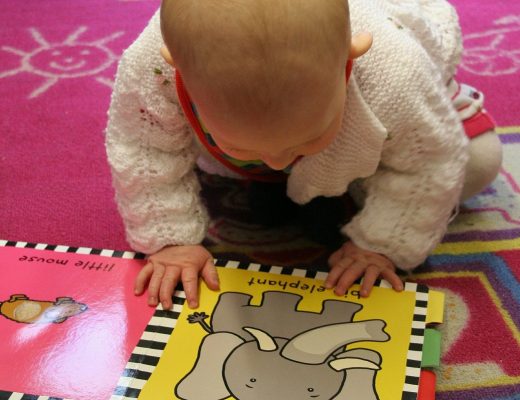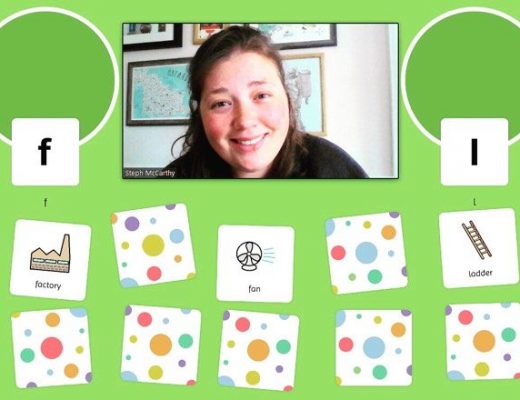This monthly blog series will take you through some of the best toys to use to support speech, language and communication development. All of the toys recommended are used in signing classes, for individual therapy or with my own daughter at home.
This month we’re looking at Grimm’s toys. They specialise in ethically made wooden toys that favour simple designs to encourage open-ended play. In the company’s own words: “When we provide our children with ready-made play and adventure worlds, which are worked out to the smallest detail, we take away the opportunity for them to develop their own creativity.“
Open-ended play means that there is no predetermined sequence or end. The aim is to allow the child’s imagination to flow, creating lots of opportunities for their language to develop. If you are looking for something to add to your toys collection, here are some of the best Grimm’s toys and how to use them to encourage your child’s language development:

These Grimm’s Fire Nesting Blocks are beautiful and unusual. They are great for stacking, building enclosures for toy animals, making tunnels for marbles, and so on. We even managed to build a rocket with ours! I would highly recommend all of the Grimm’s toys for open-ended play. There are also waves and mountains in this series to add more shapes and possibilities.

Further creative potential can be unlocked with these colourful pastel friends. Your little one can take charge with how they play while you have lots of opportunities to label colours, locations and actions. They don’t even have to be played with as little people, they can also be rolled around or posted into a box.
Case study

Research shows that when children engage in open-ended play it leads to more varied chatter, a by-product of a busy imagination. This set-up above was made spontaneously by a 4 year old. It is a city with a tunnel and lots of different buildings including the child’s house and pub next door. He spoke at length about the shapes of the buildings, their locations in the city and how to get from one part to another. There was lots of lovely language and sustained attention.
How to play
The key idea behind open-ended play is that it is child led. Research shows that less direct involvement from adults (external regulation) results in more private speech, also known as ‘talking to yourself’! Private speech is incredibly important when it comes to the development of self-regulation, imagination and language skills.
A great way to engage your child with open-ended toys is to set up an invitation to play. This just means setting the toys out in a new and exciting way! It can be as simple as stacking them in a different way or making a picture with the pieces to draw your child’s attention.
Remember to always let your child lead (this goes for any type of play), use open questions to avoid directing their thoughts, and lots of comments on what they are doing in the moment! These three strategies will ensure your child is using their imagination and developing their language skills.
Play skills are directly linked to language competence. Here is an idea of the typical ages and stages of play development (adapted from ‘From Birth to Five Years’ by Mary D. Sheridan):
| From birth | Exploratory play | Reflexes, banging and throwing |
| 9 months + | Cause-and-effect play | Pressing buttons and pulling strings for a specific outcome |
| 12 months + | Functional play | Using common objects as intended e.g. talking on toy phone |
| 18 months + | Pretend play | Feeding teddy pretend food |
| 2 -3 years | Sequential and symbolic play | Acting out familiar sequences e.g. putting dolly to bed, and pretending a block is a car |
| 3-4 years | Imaginative and narrative play | Make-believe play and use of miniatures with sometimes complex stories to go alongside |
So there you have it, sometimes when it comes to playtime the simpler the toy the more language opportunities you create. Next month we will be focusing on treasure baskets and heuristic play.
Steph is a qualified speech and language therapist. This article contains affiliate links which do provide a small commission without increasing the price for the purchaser.



